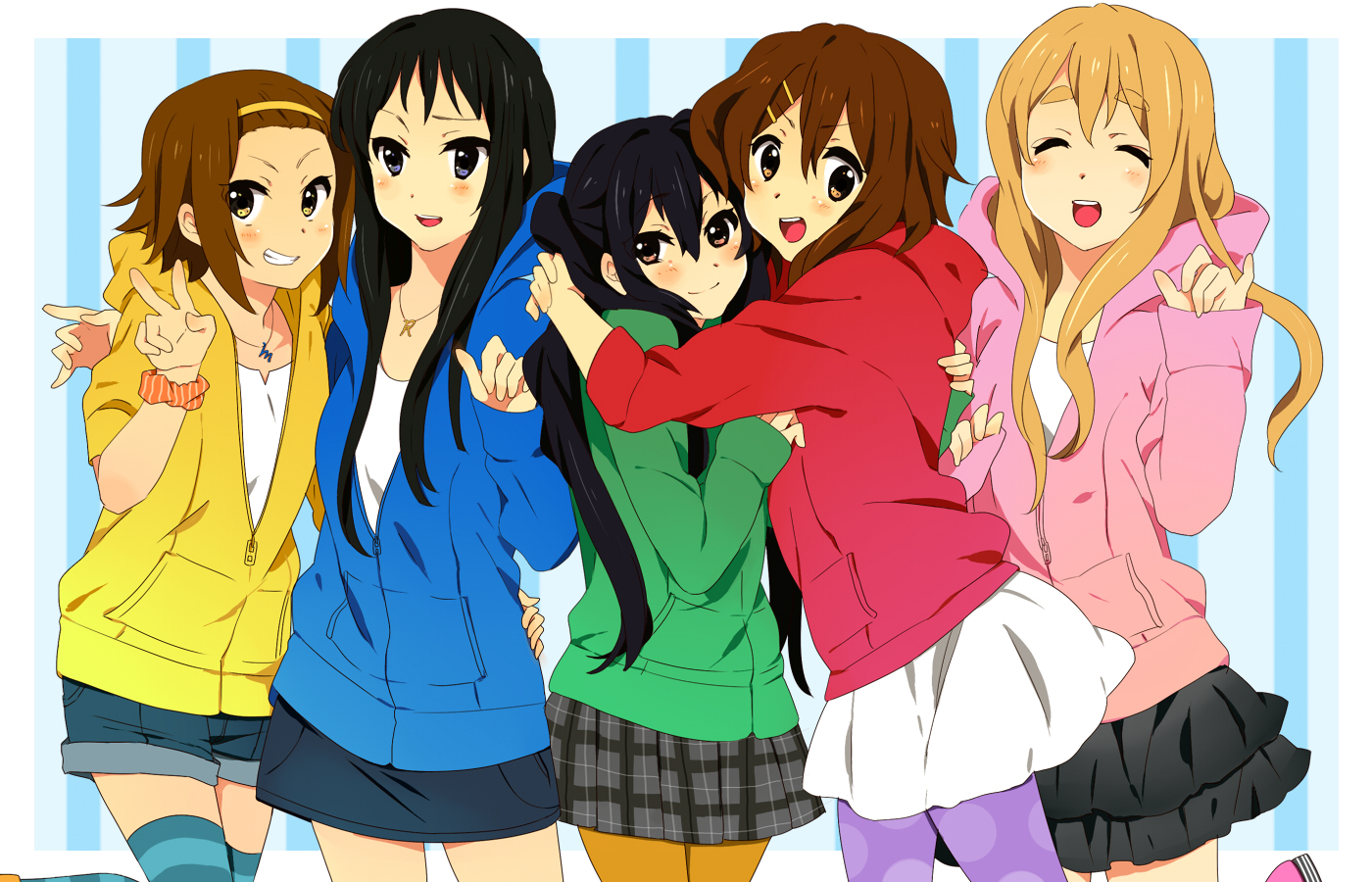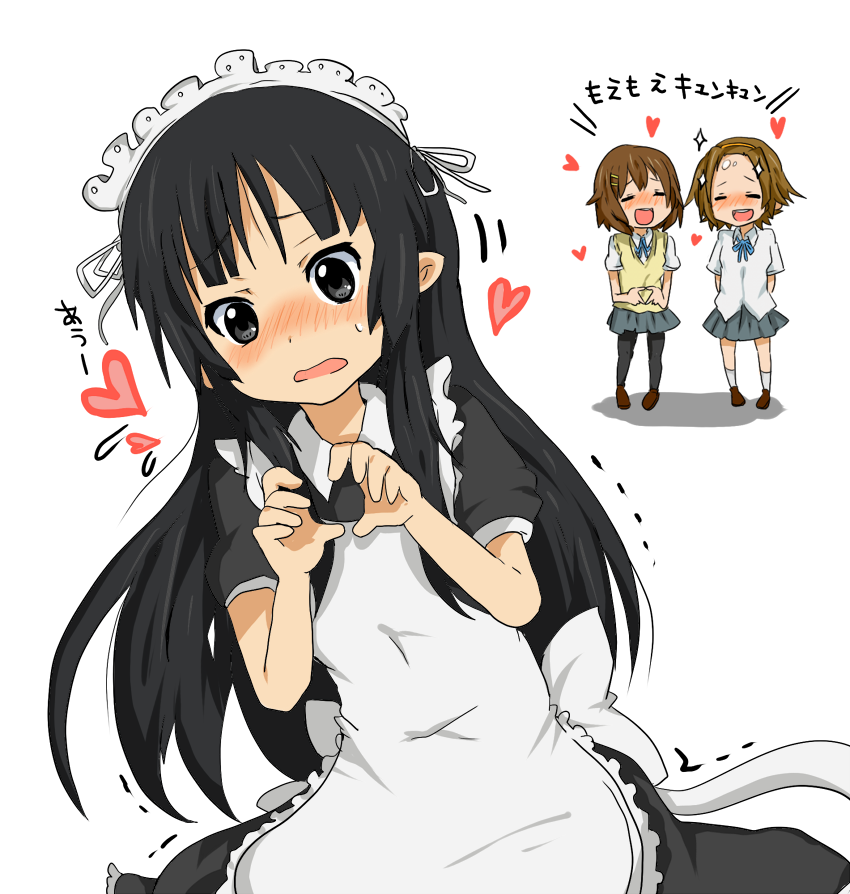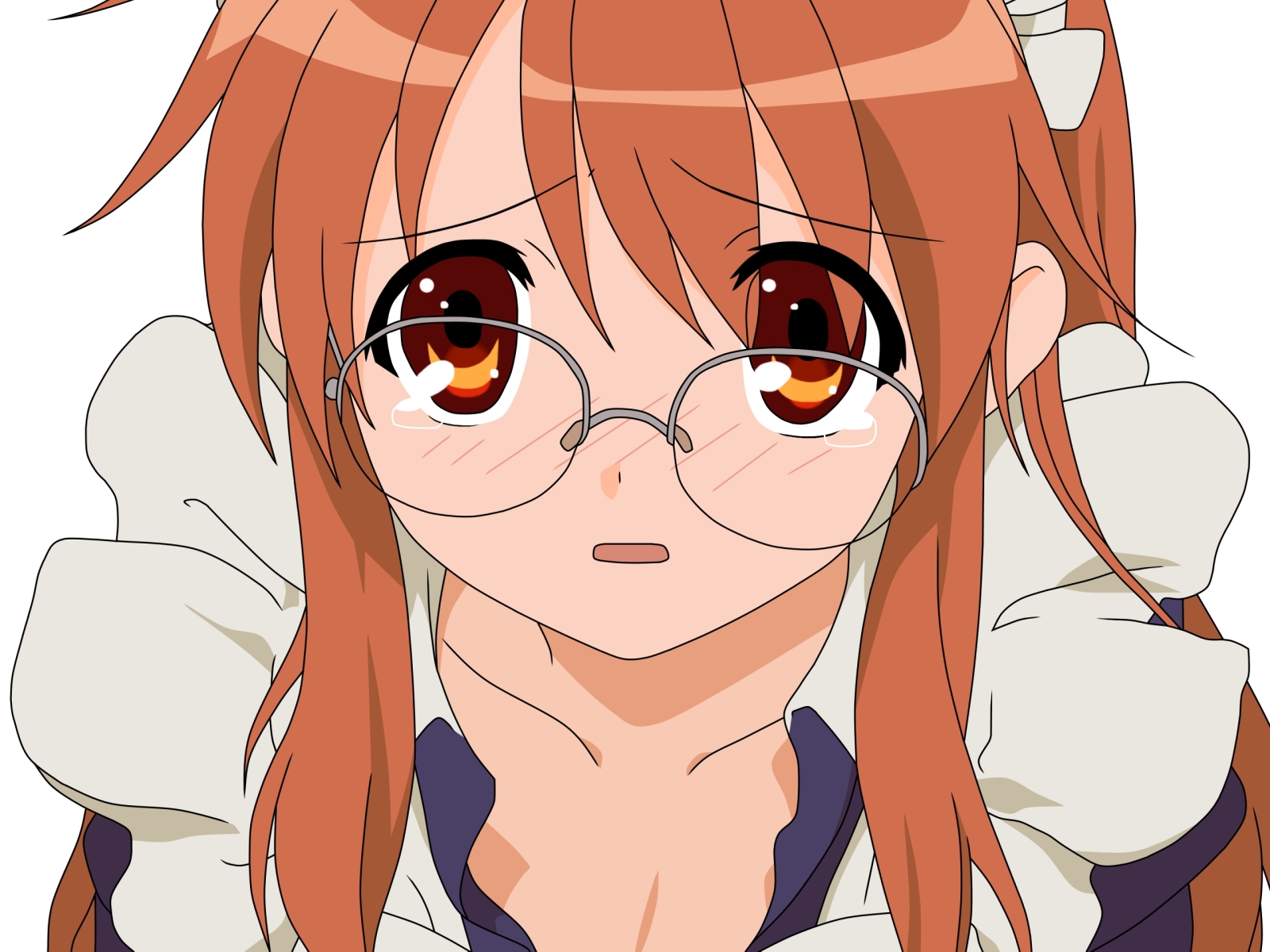This is a refined and expanded version of an editorial I originally wrote for Japanator. The original can be found here.
It seems one of the biggest problems in the ongoing moe debate is the lack of any concrete definition for the term “moe.” This has lead to all sorts of argument among otaku; some believe the term can be applied to any female character the viewer considers cute, while others argue it should be strictly limited to its original Japanese definition. Personally, I think the truth lies in between these two extremes. After all, language is defined by its usage, not by the opinions of a few crazed fanboys or some dusty old dictionary. Therefore, based on my own observations and research, I have created the Four Laws of Moe. I believe these laws lay out, in clear and concise detail, the exact parameters of moe and what traits a character must exhibit in order to be considered as such. Of course, these laws are merely a reflection of my own opinion; feel free to improve upon them, argue against them or even construct your own alternative theory. Whatever the case, I’d love to hear your thoughts in the comment section below.
Read more after the break!
The initial definition of the word “moe” is far different from the one we use today. Originally, it referred to an interest in a particular kind of character; for example, a catgirl fetish would be “nekomimi-moe,” a glasses fetish would be “meganekko-moe,” and so on. Over time, the term evolved to describe any anime or manga character that elicited feelings of protectiveness in male viewers. Unfortunately, that definition is far too broad to be practical. Therefore, based on common archetypes present in the recent ‘moe boom’, as well as popular usage of the term in the anime fandom, I’ve compiled the following Four Laws of Moe. These laws explain what I believe to be the defining aspects of any moe character.
First Law: Moe characters are cute.
The concept of ‘cuteness’ is very important in Japanese pop culture, and moe exemplifies this. A moe character will always be as cute as possible, even at the expense of being sexually attractive. In fact, a moe character will not be outright sultry or seductive, as this takes away form their innocence (explored further in the Third Law). This is because many men find sexually confident women (including those in real life) to be intimidating or manipulative, and thus not ideal for fantasizing.
In order to facilitate maximum cuteness, moe characters will almost always be female and adhere to laws two through four. Naturally, such cute charm lends to their merchandising potential; hardcore otaku are always ready to buy figures and posters of their waifu. These merchandising sales, in turn, subsidize futher late-night anime production, and thus create more moe-type shows. This is the so-called ‘vicious moe cycle’ that some anime fans feel has lead to the downfall of the medium.
Second Law: Moe characters are young.
Generally, moe girls will be around junior or high-school age, the time when they are just starting to explore their sexual identity but still retain childlike innocence. This youth allows moe characters to be fetishized without making the viewer feel uncomfortable about lolicon, but still preserves the cute naivete (not to mention virginity) that creates feelings of protectiveness. These feelings are often linked to a fatherly instinct, especially among male otaku in their twenties and thirties. Incidentally, this demographic also has a great deal of liquid capital to spend on the aforementioned merchandise.
This is not to say older characters cannot be moe. As long as they are young at heart (like Mutsumi Otohime from Love Hina) and adhere to the other three laws, they still qualify.
Third Law: Moe characters are innocent.
This goes hand-in-hand with the second law. Moe girls are almost always virgins, and frequently have had no romantic experiences whatsoever. They often have a cheerfully optimistic view of reality, and are completely unaware of the feelings and/or perversions of those around them. In their first romantic encounters, they are usually extremely shy and tend to blush a lot. This makes them seem both physically and emotionally vulnerable, once again adding to the cuteness factor and creating feelings of protectiveness.
This is probably the most important law. Without innocence, it’s hard to have a character retain the sense of vulnerability that defines moe. In fact, 2chan’s infamous ‘virgin hunters’ value this trait above all else… even going so far as to throw temper tantrums when they discover their waifu isn’t as uncorrupted as they had thought (NSFW).
Fourth Law: Moe characters are quirky.
Moe characters usually have some sort of quirk that makes them stand out from the crowd. This can be a unique physical feature (i.e. lolfang, glasses or twintails) or an unusual way of speaking (i.e. ending sentences with desu or nyoro~n). Another common quirk is behavioral in nature; common examples include the lazy girl who is always late for class, the clumsy girl who can’t do anything right, or the tsundere girl who inflicts pain on those she loves. The best kind of quirk adds to the overall cute factor of the moe character in question, without being socially undesirable. For example, running to school with toast hanging out of your mouth is fine… but collecting porn magazines is not.
Of course, many of these so-called quirks have become so common that they are now tired cliches; thighhigh stockings, glasses and twintails are three particularly egregious examples. Despite this, they have become synonymous with the moe aesthetic, thus leading to their continued popularity.
As a test, let’s apply these laws to a few examples from an old favorite of mine, The Melancholy of Haruhi Suzumiya. Any character that gets a score of 3 or higher is considered moe.
Kyon (not female, but bear with me)
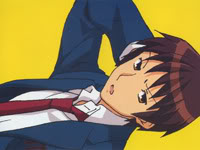
Cute: NO
Young: YES
Innocent: NO
Quirky: Uh… kinda?
Score: 1.5/4
Verdict: NOT MOE
Haruhi Suzumiya
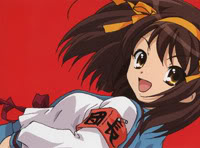
Cute: YES
Young: YES
Innocent: Uh… kinda?
Quirky: YES
Score: 3.5/4
Verdict: MOE
Yuki Nagato
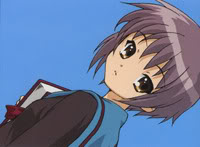
Cute: YES
Young: YES
Innocent: NO
Quirky: YES
Score: 3/4
Verdict: MOE
Mikuru Asahina
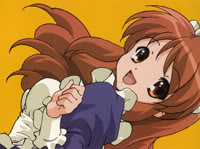
Cute: YES
Young: YES
Innocent: YES
Quirky: YES
Score: 4/4
Verdict: MAXIMUM MOE!!
And that’s my proposed system for determining moe. But how does this apply the medium of anime as a whole?
In my opinion, moe is a kind of highly specialized fanservice; it creates characters that are (to otaku) highly desirable, in both personality and sex appeal, without any of the perceived drawbacks real women have. That said, it is subject to all the limitations of regular fanservice. When moe is used sparingly, as merely one aspect of a character’s personality, it can effectively complement their other traits and make them more well-rounded. However, when a character is defined entirely by moe, with no other redeeming aspects whatsoever, they becomes two-dimensonal and uninteresting. In otaku parlance, such characters are called moeblobs, since their personalities are so ill-defined that they are little more than useless blobs. Like the big-breasted nurse from Highschool of the Dead, who exists solely to titillate viewers, moeblobs are often relegated to menial fanservice roles. Mikuru Asahina is, in my opinion, an excellent example; she was the only female character in Haruhi that had no dignity, usefulness or interesting character development besides being Haruhi’s sexual plaything. This made her a flat and boring character, and an excellent example of too much moe.
Well, those are my thoughts on moe. I’d love to hear yours in the comments below!
Further reading:
- TV Tropes on moe
- Wikipedia on moe
- Ask John: What is Moe?
- Moe: The Cult of the Child
- The Deal With Moe
- Examples of Moe Anthropomorphism

